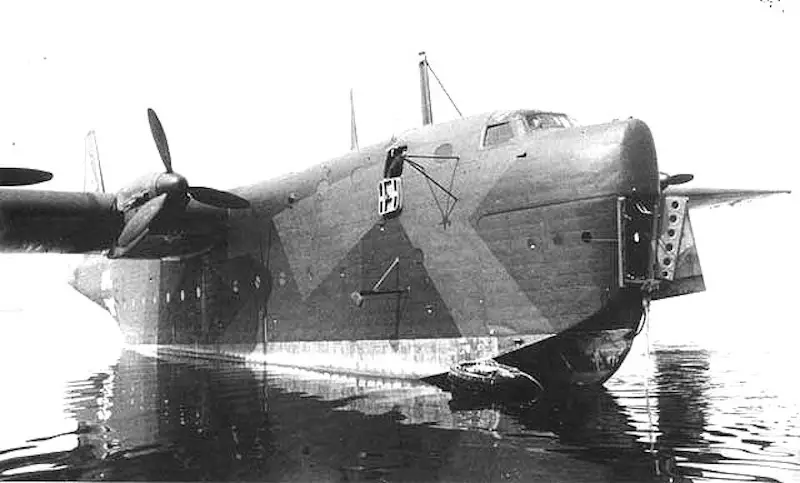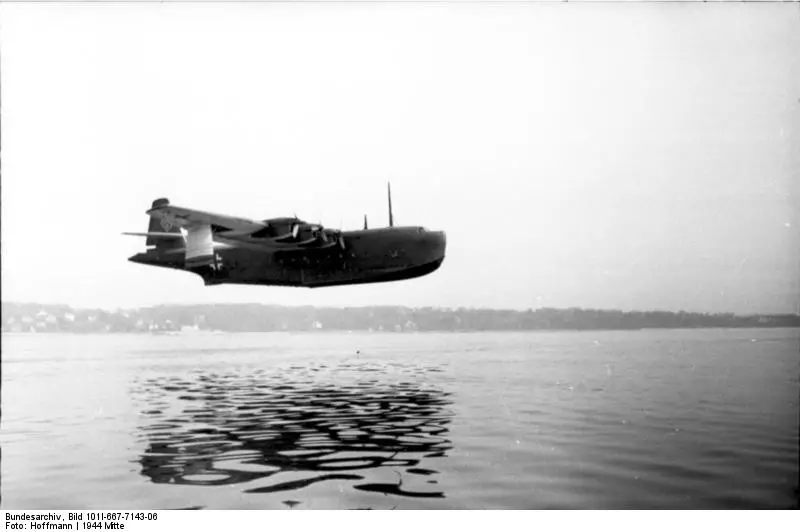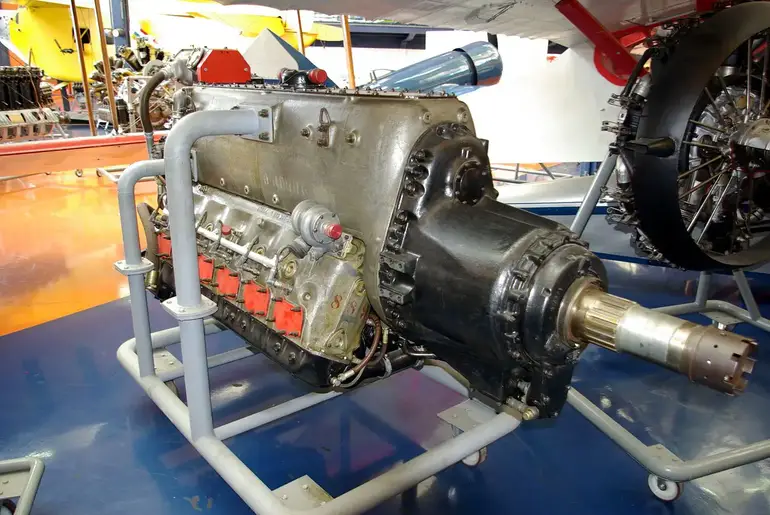Blohm & Voss BV 238 – The Flying Boat Beast
Considered the heaviest plane ever flown at the time, the Blohm & Voss BV 238 was a gigantic experimental transport plane intended to carry out a range of additional bomber and reconnaissance functions. On the other hand, a daring Allied raid and the conclusion of the Second World War meant that this titanic contraption and its multiple variants were prematurely scrapped, never to reach the production stage.
In the spring of 1940, the German Ministry of Aviation (RLM) awarded a contract to Blohm & Voss, who were required to produce a successor craft to the B-138 Flying Boat. As a result, Blohm & Voss submitted eight different designs that varied widely in form and configuration to RLM, who were primarily looking to fund a flying boat that possessed a slender planing bottom.
This was an innovation that had already been heavily investigated as part of the Blohm & Voss BV 222 program that had commenced a couple of years prior. During development, the advantages of a slimmer planing bottom with a length-to-beam ratio of 8.4 instead of the conventional length-to-beam ratio of 6 had become readily apparent. In fact, so impressed were observers by the notable reduction of aerodynamic and hydrodynamic drag, that there were calls for an even greater increase in length-to-beam ratio.
With this particular feature now being heavily emphasized by the RLM, in November 1940 Blohm & Voss were asked to hand in a further raft of designs that included this latest advance.
Anticipated to be propelled by four Jumo 223 Diesel engines, in mid-February 1941 the earliest BV 238 schematics were released, tracing out a plane that was to have a span of 173 feet and 10 inches, a length of 130 feet and 1 inch, a maximum weight of 164,244 pounds, and a heavily streamlined planing bottom with a length-to-ratio of 10.
Defensively, the plane was to be armed with twelve 20 mm MG 151 cannons mounted in remotely controlled barbettes, while performance-wise it was predicted to have a top speed of 248 miles per hour and a maximum operational range of 3,045 miles.
However, by July 1941 with the news that the Jumo 223 engines were underwhelming and not up to scratch, Blohm & Voss were forced to hurriedly redesign the entire plane to accommodate a set of alternative powerplants.
Consequently, the BV 238 was overhauled to provide space for 6 engines and enlarged: its wingspan was increased to 189 feet and 5 inches, its gross area would now be 373 square feet, and its length was upped to 149 feet and 3 inches. Furthermore, the BV 238 was now planned to operationally serve as a bomber as well as a transport.
In autumn 1941 another contract was granted by RLM which required Blohm & Voss to assemble three BV 238 A-series augmented with Daimler-Benz DB 603 liquid-cooled engines and one B-series propelled by BMW 801 air-cooled radials.

The BV 238 & FG 227
Accommodating a crew of 10, in its A-series configuration the all-metal Blohm & Voss BV 238 was of the cantilever, shoulder-wing design and had a keeled hull and a raised tailplane. It was 142 feet and 3 inches long, 43 feet high, while its empty weight was 120,769 pounds and its maximum weight was 220,460 pounds. At the time of its first flight, the BV 238 was the heaviest plane ever flown and when fully loaded had to be thrust into the air with the assistance of four take-off assistance rockets.
Its wings, which had a span of 197 feet and 4 inches and an area of 3876.84 square feet, featured electronically operated flaps lined down the entire trailing edge. It was propelled by six Daimler-Benz DB 603G 12-cylinder liquid-cooled engines, which meant it had a top speed of 264 miles per hour and a max combat range of 3790 miles, while its control system was part-servo and part-manual in the style of the BV 222.
To fulfil its transport function, the BV 238 was equipped with a hull augmented by corrosion-resistant alloy that had power-operated bow doors allowing direct loading and unloading of the lower deck. The arrangement was of a two-step design, with a shallow forward platform divided into eight small auxiliary steps.
The BV 238 V4, which was alternatively fitted with BMW 801 air-cooled radials, was the only variant to include the full armament load.

This comprised four 13 mm MG 131 machine guns in nose and tail turrets, two pairs of 20 mm MG-151 machine guns mounted in ventral and dorsal turrets, wing bays housing twenty 551-pound SC 250 bombs and a range of external load outs that included four 2,645 pound LD 1200 torpedoes, four 2,205 pound SC 1,000 bombs, and a choice of either four Henschel Hs 293 missiles or two 2205 pound Blohm und Voss BV 143 glide bombs.
Before the BV 238 was assembled, a 1:3.75 scale wooden flying model referred to as the FG 227 was first built to evaluate flight characteristics. Taking place in a factory in Czechoslovakia, the construction of the FG 227 was largely undertaken by a group of Czech students directed by Ludwig Karsch, one of the most famous glider pilots of his day.
Rolled out in early 1944, the FG 227 possessed an empty weight of 2,756 pounds, a loaded weight of 3,615 pounds, and was powered by six ILO F 12/400 two-stroke air-cooled engines. With a span of 50 feet and a length of 39 feet and 2 inches, it was significantly smaller than the BV 238. Because it was just a mock-up, the FG 227 had a basic undercarriage with 10 small wheels with low-pressure tires thought to suit the grass field where initial flight tests were to be carried out.

From the start though, the FG 227 struggled to get airborne and was promptly dissembled and transported via train to the coastal German seaside town of Travemünde for further examination. On the way however the FG 227 was sabotaged by French prisoners of war who, believing it to be a secret Nazi weapon, purposefully dropped the wing 15 feet from a hoist and roughly manhandled components onto flatbed trucks.
After repairs were finished, the FG 227 undertook a disastrous maiden voyage at Travemünde in September 1944. In the moments after take-off, all six engines malfunctioned after being starved of fuel, leading to a heavy landing that inflicted further damage.
As a result of the crash, it was decided that the FG 227 would no longer play a part in the development of the BV 238, and it was only flown a couple more times until it was captured by the British at the end of the war and scrapped at Felixstowe.
Developed concurrently with the FG 227 was a variant of the BV-238 flying boat that was modified for use on land. The BV 238-Land was essentially BV-238 V1 with a multi-wheel main undercarriage, retractable twin nosewheels, and underside bomb bays instead of a slim planing bottom.
It was intended to be used as a transport that could carry an 88,815-pound freight load over a distance of 1,240 miles, a 44,090-pound load over 4,350 miles, or an 8,818 load over 6,215 miles.

Moreover, it was also expected to be able to ferry 50 fully equipped soldiers and to act as a long-range strategic reconnaissance aircraft that could patrol over a significant portion of the US Atlantic seaboard.
Given the moniker BV 250, in early 1942 four prototypes were ordered by RLM officials. The BV 250 was mainly employed as a test bed to experiment with varying armament configurations.
In April 1942 for example, the four lateral barbettes that were originally intended to mount weapons were abandoned in favour of manned positions, and later on, the BV 250 was augmented with a special 3.97-foot wide reinforced component inserts between the centre and outboard wing panels to transfer the load of the wing-mounted turrets onto the main spar.
This modified main spar and revamped weapon’s arrangement would eventually find its way onto the BV 238 V4. Thus the BV 250 would have a much greater impact on the development of the BV 238 than the FG 227.
Aftermath
Developing alongside the FG 227 was the BV 238 itself, which was being pieced together as early as 1942 and completed by January 1944. Flight trials began in April 1944 but were unexpectedly disturbed when a fleet of Allied P-51 Mustangs sunk the BV 238 V1 at Lake Schaal just four days before the war’s end in late August 1945.
Consequently, the entire program was cancelled and the semi-completed V2 and V3 versions of the BV 238 were dismantled. The V1 survived for a little longer before it was blown up to facilitate scrapping at Hamburg between 1948 to 1949.
Hits: 0







